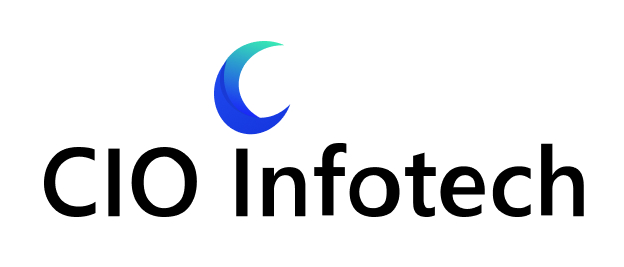Machine learning (ML) is rapidly becoming a key component of modern applications, but managing ML models at scale can be a challenge. That’s where DevOps comes in. By applying DevOps principles to the ML development lifecycle, organizations can improve collaboration between teams, speed up time to market, and increase the accuracy of ML models. In this post, we’ll explore the intersection of DevOps and MLops and discuss how DevOps practices can be applied to the ML lifecycle.
DevOps in the Context of ML
Before we dive into the specifics of MLops, let’s take a look at DevOps and how it has evolved over time. According to the 2021 State of DevOps Report by Puppet, organizations that have successfully adopted DevOps practices have seen a 22% increase in the frequency of deployments and a 50% lower change failure rate compared to organizations that have not.
ML development is similar to traditional software development in many ways, but it also has some unique characteristics. For example, ML models require large amounts of data for training and may need to be retrained periodically to maintain their accuracy. In addition, ML models can be complex and difficult to debug. These challenges make it important to apply DevOps principles to ML development, which is where MLops comes in.
Benefits of Using DevOps Practices in ML
There are many benefits to using DevOps practices in the ML lifecycle. According to a survey by Algorithmia, organizations that have adopted DevOps practices for ML development have seen a 60% reduction in time to deploy models and a 50% increase in model accuracy. By using version control for ML models and data, teams can track changes and collaborate more effectively. According to a survey by Databricks, organizations that use version control for ML models are 3 times more likely to consider their ML initiatives successful.
Continuous integration and continuous deployment (CI/CD) can speed up the development process and reduce the risk of errors. According to the 2021 State of DevOps Report, organizations that have implemented CI/CD practices have seen a 50% lower change failure rate compared to those that have not. By automating repetitive tasks, such as testing and deployment, teams can free up time for more creative work. According to a survey by O’Reilly, organizations that have adopted automation for ML development have seen a 54% reduction in time spent on manual tasks.
Challenges in Applying DevOps to ML
Applying DevOps practices to the ML lifecycle can be challenging. For example, ML development requires specialized skills and tools that may not be familiar to traditional software developers. Data management is also a critical issue, as ML models require large amounts of high-quality data for training. According to a survey by Algorithmia, data preparation and management is the most time-consuming aspect of ML development, taking up to 80% of the time.
Compliance requirements can be a challenge, as organizations must ensure that ML models meet regulatory standards and ethical considerations. According to a survey by O’Reilly, 38% of respondents cited ethical concerns as a barrier to adopting ML technologies.
To overcome these challenges, organizations can use automation and implement clear governance policies. Automation can help simplify repetitive tasks and reduce the risk of errors. Governance policies can help ensure that ML models are developed ethically and meet regulatory requirements.
MLops Architecture
In order to implement DevOps practices in the ML lifecycle, we need to have a clear understanding of the MLops architecture. The following diagram shows a high-level view of the MLops architecture:
The architecture consists of four main components:
- Data Management: This component is responsible for managing data, including collecting, cleaning, and transforming data for use in ML models. Data management is a critical aspect of MLops, as ML models require large amounts of high-quality data for training.
- Model Management: This component is responsible for managing ML models throughout their lifecycle, including version control, testing, and deployment. Model management helps ensure that models are accurate, up-to-date, and properly integrated with other systems.
- Infrastructure Management: This component is responsible for managing the infrastructure required to support ML development and deployment, including compute resources, storage, and networking. Infrastructure management is important for scaling ML applications and ensuring that they perform reliably.
- Governance and Compliance: This component is responsible for ensuring that ML models are developed ethically and meet regulatory standards. Governance and compliance policies help ensure that ML models are transparent and explainable, and that they are not biased or discriminatory.
Technical Implementation of MLops
Now that we have an understanding of the MLops architecture, let’s take a look at how DevOps practices can be applied to each component.
Data Management
Data management in MLops involves collecting, cleaning, and transforming data for use in ML models. This process is often time-consuming and requires a significant amount of manual effort. However, there are several DevOps practices that can be used to streamline data management:
- Version control: By using version control systems like Git, teams can track changes to data and collaborate more effectively. This can be particularly useful when working with large datasets or when multiple team members are involved in data management.
- Automated testing: Just like with software development, automated testing can help catch errors early and reduce the risk of bugs in production. For ML, this can involve testing data pipelines, data transformations, and data quality.
- Continuous integration: Continuous integration (CI) can be used to automatically build and test data pipelines and ensure that they are working as expected. This can help catch issues early and reduce the risk of errors in production.
Model Management
Model management in MLops involves version control, testing, and deployment of ML models. There are several DevOps practices that can be used to improve model management:
- Version control: By using version control systems like Git, teams can track changes to ML models and collaborate more effectively. This can be particularly useful when multiple team members are involved in model development.
- Automated testing: Just like with data management, automated testing can help catch errors early and reduce the risk of bugs in production. For ML, this can involve testing model accuracy, performance, and generalization.
- Continuous deployment: Continuous deployment (CD) can be used to automatically deploy ML models to production as soon as they are ready. This can help reduce the time to market for ML applications and increase the speed of iteration.
Infrastructure Management
Infrastructure management in MLops involves managing the compute resources, storage, and networking required to support ML development and deployment. There are several DevOps practices that can be used to improve infrastructure management:
- Infrastructure as code: Infrastructure as code (IaC) can be used to define infrastructure requirements in code, making it easier to manage and version infrastructure configurations. This can help ensure that infrastructure is consistent across environments and reduce the risk of configuration errors.
- Automated provisioning: Automated provisioning can be used to provision compute resources, storage, and networking automatically, based on predefined rules and policies. This can help scale ML applications up and down as needed, without requiring manual intervention.
- Monitoring and alerting: Monitoring and alerting can be used to detect issues with infrastructure, such as performance bottlenecks or resource constraints, and alert team members when action is needed. This can help ensure that ML applications perform reliably and consistently.
Governance and Compliance
Governance and compliance in MLops involves ensuring that ML models are developed ethically and meet regulatory standards. There are several DevOps practices that can be used to improve governance and compliance:
- Explainability and interpretability: ML models should be transparent and explainable, so that stakeholders can understand how they work and why they make certain predictions. This can involve using techniques like feature importance analysis or partial dependence plots.
- Bias detection and mitigation: ML models should be free from bias or discrimination, and should be designed to ensure fairness and equality. This can involve using techniques like demographic parity or equalized odds.
- Compliance frameworks: Compliance frameworks like GDPR or HIPAA can be used to ensure that ML models meet regulatory standards and protect user privacy. These frameworks provide guidelines for data collection, storage, and processing, as well as requirements for transparency and accountability.
Conclusion
In conclusion, the integration of DevOps principles and practices in MLOps is instrumental in addressing the unique challenges of machine learning deployments. By combining the agility, automation, and collaboration of DevOps with the complexities of managing machine learning models, organizations can achieve more efficient and reliable MLOps processes. DevOps enables automation of repetitive tasks, streamlines workflows, and promotes collaboration and communication between data scientists, developers, and operations teams. This integration also facilitates scalability and flexibility through infrastructure-as-code, containerization, and orchestration, allowing organizations to deploy and manage ML models in various environments with ease. Additionally, the adoption of continuous integration and deployment practices ensures faster time-to-market, reduced risks, and the ability to deliver value to stakeholders more efficiently. With monitoring and feedback loops, DevOps in MLOps enables proactive issue detection, performance tracking, and continuous improvement. By embracing DevOps, organizations can maximize the potential of their machine learning initiatives, drive innovation, and stay ahead in the rapidly evolving landscape of data-driven technologies.



